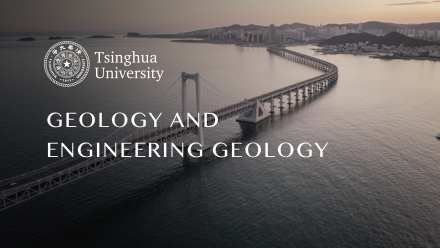
当前课程知识点:Geology and Engineering Geology > 2 Endogenic Geological Process > 2.4 Earthquake > Chapter 2.4 Earthquake
返回《Geology and Engineering Geology》慕课在线视频课程列表
返回《Geology and Engineering Geology》慕课在线视频列表
同学们好 欢迎来到地质学与工程地质课程
相信大家对地震并不陌生
也许有的同学亲身经历过地震的过程
这节课我们就来学习一些
与地震有关的地质学的基础知识
地震呢 它是一种常见的突发性地质现象
它是地球内部缓慢积累的能量突然释放
引起地球表层快速振动的一种现象
是地壳所积累的应变能的释放方式
也是当前地壳运动的主要表现方式之一
当然了 有时有些人为的因素
也会引起这种地面的振动
下面我们就来看一些与地震有关的要素
地震发生的起始位置
或者说地下岩石破裂的地方 我们称为震源
震源在地面上一个垂直投影我们称为震中
从震中到震源的垂直距离称为震源深度
根据目前发生的地震来看震源深度有的是几公里
有的最深可以达到700公里
地面上受地震影响的任意一点
到震中的距离我们称为震中距
把地面破坏程度相似的各个点连接起来
形成的曲线我们称为等震线
那么根据统计全世界每年发生的地震有500万次
其中绝大部分是人们觉察不到的一些微小地震
能觉察到的地震约有5万多次
造成强烈破坏的地震每年只有十几次
而给人类带来巨大灾难的地震就更少了
根据联合国统计资料表明从1900年到1976年
这76年期间内 全世界因地震灾害
而死亡的人数多达260万
占所有的自然灾害死亡人数的58%以上
而在1970年到1981年这短短的12年时间内
因地震造成的经济损失就达到了1856.7亿美元
下面我们来看几个近代发生的强烈的地震灾害
1923年9月1日 日本的关东
发生8.1级的大地震 造成了14万人死亡
经济损失达到了300亿美元
那么1976年7月28日
我国的唐山发生了7.8级大地震
使得24万余人丧生
造成了8千亿人民币经济损失
2004年12月26日
印尼苏门答腊以北的印度洋海底
发生地震并引发了强烈的海啸灾害
这可以说是近代历史上世界范围内
最具破坏性和最复杂的自然灾害之一
根据估计这场灾难中约有30万人死亡
14.3万人失踪 邻近的十几个国家
受到不同程度的影响
2008年5月12日
我国四川的汶川发生了8.0级地震
造成了8.7万人丧生
直接经济损失达到8451.4亿人民币
2010年1月13日海地的太子港发生了7.0级地震
造成了22.26万余人死亡 800多人失踪
经济损失约达到了77.5亿美元
2014年8月3日
我国的云南鲁甸发生了6.5级地震
造成600余人丧生 等等
这些惨痛的地震灾害给人类敲响了警钟
也告诉我们在从事工程建设的时候
必须要考虑地震灾害的影响
从地震的成因类型上来讲
大致可以分为构造地震 火山地震
陷落地震和诱发地震四大类
其中构造地震呢它是由断层活动而引起的地震
占全球地震总数的90%以上
破坏性的大地震 特大地震都属于构造地震
比如2008年的汶川地震
就是由龙门山断裂活动而引起的
火山地震是由深部岩浆活动而引起的
例如岩浆的涌动喷出
或者喷出后下方塌陷而造成一种地震
这种类型的地震震级一般比较小
而且呈群震发育特点
仅占全球地震总数的7%左右
陷落地震它是由地下大型的洞穴垮塌
而引起的这种振动
诱发地震它是由于人类的工程活动
比如深井注水 石油的开采
矿山开采以及水库的修建等等
而引起局部地区异常的地震活动
所以有时候又叫做人工地震
最常见的就是水库诱发地震
水库诱发地震一般与水库的蓄水过程相关
比如这是我国的一些水电站在蓄水
及运营期水库诱发地震情况
可以看出水库蓄水一段时间后
库区均会有明显的地震活动加强现象
这张图是三峡库区奉节段
地震年频次与蓄水过程关系图
大家都知道2008年三峡水电站
实现了首次175米实验蓄水
水位达到了172.8米高程
我们可以看出同期的地震频率
也呈现急剧增加的趋势
就目前看来诱发地震的震级一般比较小
震源比较浅 影响的范围也相对比较小
从全球地震分布特征来看
他们主要受到板块构造的影响
集中分布在环太平洋地震带
阿尔卑斯喜—马拉雅地震带
洋中脊裂谷地震带以及转换断层地震带上
我国受环太平洋及阿尔卑斯—喜马拉雅
这两个全球地震带的影响
成为世界上地震灾害最严重的国家之一
这个是我国近代发生的一些
特大型的地震灾害分布图
可以看出它们主要是与我国的
大陆地壳断裂活动带分布有密切的关系
作为工程地质工作者
我们需要掌握地震有关的一些知识
以更好为工程建设规划 选址
和设计提供地质基础资料
下面我们来学习与地震有关的几个基本概念
地震引起的振动以波的方式从震源向各个方向传播
称为地震波 地震波它是一种弹性波
根据地震波的传播方式
又可以分为体波和面波
体波呢它可以在地球内部传播
又根据质点的振动与传播方向的关系
又可以分为纵波和横波
纵波又称为P波
它是一种由震源向外传递的压缩波
质点的振动方向与波的传播方向是一致的
横波又称为S波
它是由震源向外传播的一种剪切波
质点的振动方向与波的传播方向垂直
面波是体波达到地面之后激发而形成的次生波
它只能在地表面传播
又可以分为瑞雷波和勒普波
瑞雷波又称为R波
它是质点在波的传播方向和自由面
也就是地表面法线组成的平面内做椭圆运动
而与该平面垂直的水平方向没有发生任何振动
也就是说在地面呈现一种滚动形式
勒普波呢 又称Q波
质点只是在与传播方向相垂直的水平方向上做运动
也就是说在地面上呈现一种蛇形运动形式
在地震中纵波最先到达地面
其次是横波 最后到的是面波
所以在地震时我们首先感到的是垂直方向的振动
当横波和面波到达地面的时候
地面的震动最为强烈
所以一般来讲建筑物的破坏
主要是由横波和面波造成的
一次地震的大小和强度用震级来表示
它可以通过仪器来观测得到
震级在工程中应用较为广泛
通常根据震级的大小可以将地震分为
微震 有感地震 破坏性地震和强烈地震四类
一个地区地面和多类建筑物
遭受一次地震影响的强烈程度
我们称为地震烈度
它反映的是地震时一定地点
地面的振动强烈程度 值得注意的是
在同一次地震中不同的场地即使震中距相同
它们的地震烈度也可能不同
这主要是由于场地的地质条件
比如岩土体的性质 地质构造 地形地貌
及水文地质条件的差异而引起的
地震烈度在工程上的意义
主要是作为设防的标准
工程中常用的烈度有基本烈度
它是指在一定时期内
一个地区可能遭受的最大的地震烈度
通常作为一个地区的抗震设防标准
而设防烈度是指一个地区经过有关部门
比如地震局 建设部门等等批准的设防依据
一般采用地震区划图中的基本烈度来表示
对一个地区各类建筑物的设防标准是相同的
设计烈度呢 它是针对一个具体的建筑物而言的
根据建筑物的重要性可以在基本烈度的基础上
进行提高或者降低
在地震时受地面振动的影响
将在一定区域内造成不同程度的灾害
这种地震过程中在影响所及的一定范围内
于地面出现的各种震害和破坏
我们称为地震的效应
根据地震灾害发生机理
可以将地震效应分为振动地震效应
和地面破坏效应两种类型
所谓振动破坏效应
它是由地震力直接引起的建筑物破坏
主要包括建筑物的水平滑动 晃动和共振等等
地震时大部分建筑物的破坏都是由振动破坏引起
所以说振动破坏效应是最主要的地震灾害效应
地面破坏效应按照它的形成条件
破坏规模和范围又可以分为断裂效应
斜坡效应和地基效应三类
断裂效应它是地震
导致岩土体直接出现断层或者地裂
从而引起附近的建筑物比如道路 桥梁
房屋等的一些破坏
斜坡效应它是地震导致斜坡失稳
产生不同程度变形和破坏
比如滑坡 崩塌等等 从而引起临近建筑物的破坏
地基效应它是地基岩土体在地震作用下
产生不同程度振动压密 下沉甚至液化
或塑性流动等灾害
从而使地基失效引起上覆建筑物的变形和破坏
一般来讲断裂效应和斜坡效应
对山区的建筑影响比较大
而地基效应一般发生在平原疏松的沉积层地区
比如1964年日本新泻地震中
由于地基液化而造成了大量的房屋发生倾倒破坏
这节课我们学习了
最后一类内动力地质作用就是地震作用
通过这节课学习 同学们了解地震的成因类型
掌握与地震有关的
一些基本概念及地震的灾害效应
从而为实际的工程中进行抗震设计奠定基础
-0.1 Human Engineering Activities and the Geological Environment
--Chapter 0.1 Human Engineering Activities and the Geological Environment
-0.2 Tasks for Engineering Geology
--Chapter 0.2 Tasks for Engineering Geology
-0 Quiz--Homework
-1.1 Formations and Evolution of the Earth
--Chapter 2.1 Formations and Evolution of the Earth
-1.2 Basic Attributes of the Earth
--Chapter 1.2 Basic Attributes of the Earth
-1.3 Construction of the Geo-sphere and the Geological Processes
--Chapter 1.3 Construction of the Geo-sphere and the Geological Processes
-1 Quiz--Homework
-2.1 Crustal Movement
--Chapter 2.1 Crustal Movement
-2.2 Magmatism
-2.3 Metamorphism
-2.4 Earthquake
-2 Quiz--Homework
-3.1 Introduction
-3.2 Weathering Effects
--chapter 3.2.1 Physical Weathering
--chapter 3.2.2 Chemical and Biological Weathering
--chapter 3.2.3 Weathering Products and Influencing Factors of the Weathering Process
-3.2 Weathering Effects--Homework
-3.3 Geological Effects of the Flowing Surface Water
--chapter 3.3.1 Geologic Process of Temporary Torrents
--chapter 3.3.2.1 River Erosion Effects
--chapter 3.3.2.2 River Transport and Sedimentation Effects
-3.3 Geological Effects of the Flowing Surface Water--Homework
-3.4 Geological Effects of Winds
--Chapter 3.4 Geological Effects of Winds
-3.4 Geological Effects of Winds--Homework
-3.5 Geological Effects of Glaciers
--Chapter 3.5 Geological Effects of Glaciers
-3.5 Geological Effects of Glaciers--Homework
-3 Quiz Easy--Homework
-3 Quiz Enhanced--Homework
-4.1 Minerals
--Chapter 4.1.1 Minerals and Their Morphological Characteristics
--4.1.2 Minerals and Rocks-Mineral Characteristics-Physical and Mechanical Prop
--Chapter 4.1.3 Visual Identification of Common Minerals
-4.1 Minerals--Homework
-4.2 Magmatic Rocks
--Chapter 4.2.1 Main Mineral Compositions of Magmatic Rocks
--Chapter 4.2.2 Texture and Structure of Magmatic Rocks
--Chapter 4.2.3 Common Classification and Identification Methods for Magmatic Rocks
--Chapter 4.2.4 Basic Characteristics of Common Magmatic Rocks Ⅰ
--Chapter 4.2.5 Basic Characteristics of Common Magmatic Rocks Ⅱ
-4.2 Magmatic Rocks--Homework
-4.3 Sedimentary Rocks
--Chapter 4.3.1 Material Compositions of Sedimentary Rocks
--Chapter 4.3.2 Texture and Structure of Sedimentary Rocks
--Chapter 4.3.3 Basic Characteristics of Common Sedimentary Rocks
-4.3 Sedimentary Rocks--Homework
-4.4 Metamorphic Rocks
--Chapter 4.4.1 Mineral Composition and their Texture andStructure
--Chapter 4.4.2 Basic Characteristics of Metamorphic Rocks
-4.4 Metamorphic Rocks--Homework
-第4章 Quiz Easy--Homework
-第4章 Quiz Enhanced--Homework
-5 The Geologic Times
--Chapter 5 The Geologic Times
-5 Quiz--Homework
-6.1 Horizontal Structure and Dipping Structure
--Chapter 6.1 Horizontal Structure and Dipping Structure
-6.2 Fold Structure
-6.3 Fault Structure
--Chapter 6.3.2 Characteristics and Types of Faults
--Chapter 6.3.3 Fault Identification in the Wild
-6 Quiz Easy--Homework
-6 Quiz Enhanced--Homework
-7.1 ntroduction
--Chapter 7.1.1 Types of Geological Maps
--Chapter 7.1.2 Scale of Geological Maps
-7.2 Presentation of the Geological Maps
--Chapter 7.2.1 Formation Lithology
--Chapter 7.2.2 Geological Structure
--Chapter 7.2.3 Contact Relations Between Stratas
-7.3 Reading and Analysis of the Geological Maps
--Chapter 7.3 Reading and Analysis of the Geological Maps
-7 Quiz Easy--Homework
-7 Quiz Enhanced--Homework
-8.1 Basic Conceptuals
--Chapter 8.1 Basic Conceptuals
-8.1 Basic Conceptuals--Homework
-8.2 Reservation and Movements of Ground Water
--Chapter 8.2 Reservation and Movements of Ground Water
-8.2 Reservation and Movements of Ground Water--Homework
-8.3 Movements of the Ground Water
--Chapter 8.3 Movements of the Ground Water
-8.3 Movements of the Ground Water--Homework
-8.4 Ground Water Quality
--Chapter 8.4 Ground Water Quality
-8.4 Ground Water Quality--Homework
-8.5 Ground Water Related Issues on Engineering Geology
--Chapter 8.5 Ground Water Related Issues on Engineering Geology
-8.5 Ground Water Related Issues on Engineering Geoligical Problem--Homework
-8 Quiz Easy--Homework
-8 Quiz Enhanced--Homework
-9.1 Soil Mass
-9.1 Soil Mass--Homework
-9.2 Attributes of Soils
--Chapter 9.2.1 Physical Properties of Soil
--Chapter 9.2.2 Water-Physical Properties of Soil
--Chapter 9.2.3 Mechanical Properties of Soil
-9.2 Attributes of Soils--Homework
-9.3 Engineering Classification of Soils
--Chapter 9.3 Engineering Classification of Soils
-9.4 Special Soils and Its Engineering Attributes
--Chapter 9.4.1 Soft Soil and Its Engimeering Attributes
--Chapter 9.4.2 Loess and Its Engineering Attributes
--Chapter 9.4.3 Expansive Soil adn Its Engineering Attributes
-9.4 Special Soils and Its Engineering Attributes--Homework
-9 Quiz Easy--Homework
-9 Quiz Enhanced--Homework
-10.1 Introduction
--10.1 Introduction--Homework
-10.2 Physical and Water-Physical Properties of Rocks
--Chapter 10.2 Physical and Water-Physical Properties of Rocks
--10.2 Physical and Water-Physical Properties of Rocks--Homework
-10.3 Mechanical Properties of Rocks
--Chapter 10.3.1 Deformation Characteristics
--10.3 Mechanical Properties of Rocks--Homework
-10.4 Structural Plane and Structural Body of Rock Mass
--Chapter 10.4 Structural Plane and Structural Body of Rock Mass
--10.4 Structural Plane and Structural Body of Rock Mass--Homework
-10.5 Features and Mechanical Properties of the Structural Plane
--Chapter 10.5.1 Properties of Structural Plane
--Chapter 10.5.2 Mechanical Properties of Structural Plane
--10.5 Features and Mechanical Properties of the Structural Plane--Homework
-10.6 Mechanical Properties of Rock Mass
--Chapter 10.6 Mechanical Properties of Rock Mass
--10.6 Mechanical Properties of Rock Mass--Homework
-10.7 Engineering Classification of Rock Mass
--Chapter 10.7.1 Engineering Classification of Rock Mass Ⅰ
--Chapter 10.7.2 Engineering Classification of Rock Mass Ⅱ
--10.7 Engineering Classification of Rock Mass--Homework
-10 Quiz Easy--Homework
-10 Quiz Enhanced--Homework
-11.1 Slope Deformation and Destruction
--Chapter 11.1.1 Slope Deformation
--Chapter 11.1.2 Slope Destruction
-11.1 Analysis on the Stability of Slopes--Homework
-11.2 Factors on the Stability of Slopes
--Chapter 11.2 Factors on the Stability of Slopes
-11.3 Analysis on the Stability of Slopes
--Chapter 11.3 Analysis on the Stability of Slopes
-11.3 Analysis on the Stability of Slopes--Homework
-11.4 Structural Analysis Method on Rocky Slope Stability
--Chapter 11.4.1 Stereographic Projection Method Ⅰ
--Chapter 11.4.2 Stereographic Projection Method Ⅱ
-11.5 Measures for Preventing and Controlling the Slope Deformation
--Chapter 11.5 Measures for Preventing and Controlling the Slope Deformation
-11.5 Measures for Preventing and Controlling the Slope Deformation--Homework
-11 Quiz Easy--Homework
-11 Quiz Enhanced--Homework
-12.1 Underground Caverns and the Stress Distribution
--Chapter 12.1 Underground Caverns and the Stress Distribution
-12.1 Underground Caverns and the Stress Distribution--Homework
-12.2 Deformation and Destruction of the Adjacent Rocks
--Chapter 12.2.1 Brittle Adjacent Rock
--Chapter 12.2.2 Plastic Surrounding Rock and Surrounding Rock Stability Sign
-12.3 Factors on Stability of the Adjacent Rocks
--Chapter 12.3 Factors on Stability of the Adjacent Rocks
-12.4 Measures for Preventing Instability of the Adjacent Rocks
--Chapter 12.4 Measures for Preventing Instability of the Adjacent Rocks
-12 Quiz--Homework
-13.1 Dam Foundation of the Water Conservancy Project
--Chapter 13.1.1 Dam Types and Requirements for Engineering Geological Conditions
--Chapter 13.1.2 Deformation Failure Mode and Stability Analysis
-13.2 Common Methods of Foundation Constructions
--Chapter 13.2 Common Methods of Foundation Constructions
-13 Quiz--Homework
-14.1 Reservoir Leakage
--Chapter 14.1 Reservoir Leakage
-14.2 Stability of the Reservoir Bank
--Chapter 14.2 Stability of the Reservoir Bank
-14.3 Reservoir Surrounding Immersions and Sedimentations
--Chapter 14.3 Reservoir Surrounding Immersions and Sedimentations
-14 Quiz--Homework
-15.1 Introduction
-15.2 Engineering Geological Mapping
--Chapter 15.2.1 Research Content
--Chapter 15.2.2 Structural Plane Statistics
-15.3 Engineering Geological Exploration and Field Experiments
--Chapter 15.3 Engineering Geological Exploration and Field Experiments
-15.4 Instructions on the Geological Compass
--Chapter 15.4 Instructions on the Geological Compass
- Quiz--Homework

